Related Research Articles

Oxford is a borough in Chester County, Pennsylvania, United States. Oxford is the closest town to Lincoln University. The population was 5,733 at the 2020 census.

Mercersburg is a borough in Franklin County, Pennsylvania, United States. The borough is 72 miles (116 km) southwest of Harrisburg, the state capital.
The African Union Methodist Protestant Church (AUMPC), abbreviated as A.U.M.P. Church, is a Methodist denomination. It was chartered by Peter Spencer (1782–1843) in Wilmington, Delaware, in 1813 as the "Union Church of Africans", where it became known as the "African Union Church".
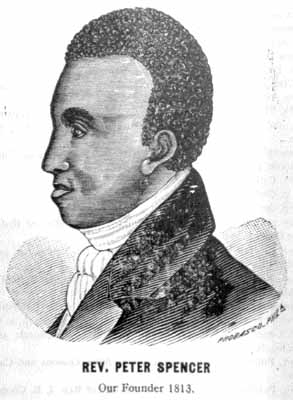
Peter Spencer (1782–1843) was an American freedman who in 1813 founded the Union Church of Africans in Wilmington, Delaware. The denomination is now known as the African Union First Colored Methodist Protestant Church and Connection, or A.U.M.P. Church for short. Born into slavery in 1782 in Kent County, Maryland, Spencer was freed after his master died, by the terms of his will.
The Spencer Churches are two African-American Christian denominations in the United States that resulted from an 1860s schism in the Union Church of Africans. That denomination was founded by Peter Spencer, a freed slave, in Wilmington, Delaware in 1813.

The American Colonization Society (ACS), initially the Society for the Colonization of Free People of Color of America, was an American organization founded in 1816 by Robert Finley to encourage and support the repatriation of freeborn people of color and emancipated slaves to the continent of Africa. It was modeled on an earlier British Committee for the Relief of the Black Poor's colonization in Africa, which had sought to resettle London's "black poor". Until the organization's dissolution in 1964, the society was headquartered in Room 516 of the Colorado Building in Washington, D.C.
An African American is a citizen or resident of the United States who has origins in any of the black populations of Africa. African American-related topics include:

In the United States before 1865, a slave state was a state in which slavery and the internal or domestic slave trade were legal, while a free state was one in which they were prohibited. Between 1812 and 1850, it was considered by the slave states to be politically imperative that the number of free states not exceed the number of slave states, so new states were admitted in slave–free pairs. There were, nonetheless, some slaves in most free states up to the 1840 census, and the Fugitive Slave Clause of the U.S. Constitution, as implemented by the Fugitive Slave Act of 1793 and the Fugitive Slave Act of 1850, provided that a slave did not become free by entering a free state and must be returned to their owner. Enforcement of these laws became one of the controversies which arose between slave and free states.
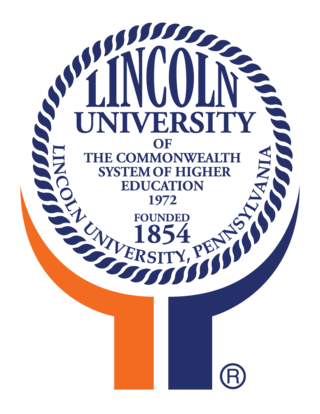
Lincoln University (LU) is a public state-related historically black university (HBCU) near Oxford, Pennsylvania. Founded as the private Ashmun Institute in 1854, it has been a public institution since 1972 and is the second HBCU in the state, after Cheyney University of Pennsylvania. Lincoln is also recognized as the first college-degree granting HBCU in the country. Its main campus is located on 422 acres (170.8 ha) near the town of Oxford in southern Chester County, Pennsylvania. The university has a second location in the University City area of Philadelphia. Lincoln University provides undergraduate and graduate coursework to approximately 2,000 students. It is a member-school of the Thurgood Marshall College Fund.
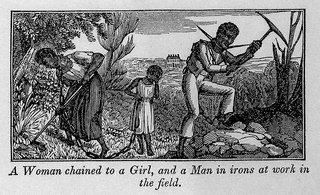
African-American history started with the arrival of Africans to North America in the 16th and 17th centuries. Formerly enslaved Spaniards who had been freed by Francis Drake arrived aboard the Golden Hind at New Albion in California in 1579. The European colonization of the Americas, and the resulting Atlantic slave trade, led to a large-scale transportation of enslaved Africans across the Atlantic; of the roughly 10–12 million Africans who were sold by the Barbary slave trade, either to European slavery or to servitude in the Americas, approximately 388,000 landed in North America. After arriving in various European colonies in North America, the enslaved Africans were sold to white colonists, primarily to work on cash crop plantations. A group of enslaved Africans arrived in the English Virginia Colony in 1619, marking the beginning of slavery in the colonial history of the United States; by 1776, roughly 20% of the British North American population was of African descent, both free and enslaved.
Ruxton and Riderwood are unincorporated communities in Baltimore County, Maryland, United States. They are sometimes considered a part of Towson and are part of Towson's census area.
The history of Delaware as a political entity dates back to the early colonization of North America by European settlers. Delaware is made up of three counties established in 1638, before the time of William Penn. Each county had its own settlement history. The state's early colonists tended to identify more closely with their county than Delaware as a whole. Large parts of southern and western Delaware were thought to have been in Maryland until 1767. The state has existed in the wide economic and political circle of the nearby Pennsylvanian city of Philadelphia.

Richard Burton Fitzgerald was an American brickmaker and business man who lived in Durham, North Carolina. After building his enterprise, he became president of the black-owned Mechanics and Farmers Bank in Durham, and was involved in other business ventures throughout North Carolina. He served as first president of Coleman Manufacturing Company, established in 1897 as the first cotton mill in the United States to be owned and operated by blacks. His bricks were used for major construction projects in the state's largest cities, including the capital.
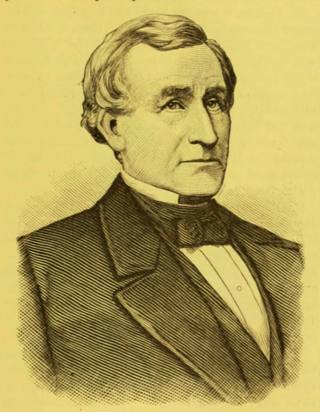
John Miller Dickey was an American Presbyterian minister. He and his wife, Sarah Emlen Cresson, a Quaker, founded Ashmun Institute on May 24, 1854, which was renamed Lincoln University in 1866 following the assassination of President Abraham Lincoln. They named the school after Jehudi Ashmun, a religious leader and social reformer. They founded the school for the education and religious training of African American men, whose opportunities were limited. Lincoln University is the oldest historically black college or university in the United States.

Slavery in Maryland lasted over 200 years, from its beginnings in 1642 when the first Africans were brought as slaves to St. Mary's City, to its end after the Civil War. While Maryland developed similarly to neighboring Virginia, slavery declined in Maryland as an institution earlier, and it had the largest free black population by 1860 of any state. The early settlements and population centers of the province tended to cluster around the rivers and other waterways that empty into the Chesapeake Bay. Maryland planters cultivated tobacco as the chief commodity crop, as the market for cash crops was strong in Europe. Tobacco was labor-intensive in both cultivation and processing, and planters struggled to manage workers as tobacco prices declined in the late 17th century, even as farms became larger and more efficient. At first, indentured servants from England supplied much of the necessary labor but, as England's economy improved, fewer came to the colonies. Maryland colonists turned to importing indentured and enslaved Africans to satisfy the labor demand.

In the United States, abolitionism, the movement that sought to end slavery in the country, was active from the colonial era until the American Civil War, the end of which brought about the abolition of American slavery, except as punishment for a crime, through the Thirteenth Amendment to the United States Constitution.
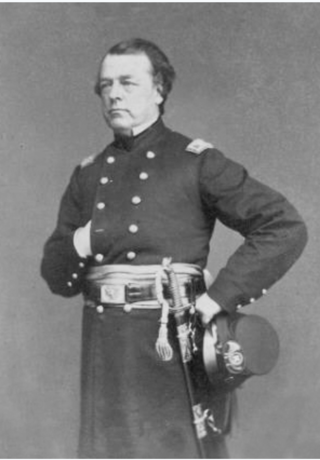
Edgar Mantlebert Gregory was a Union Army officer during the American Civil War, Freedmen's Bureau official, and abolitionist. Prior to the war, he worked in lumber, banking, and railroad businesses in Cincinnati, where he also helped people escape slavery. During the war he rose to the rank of Brevet major general for his "gallant and distinguished service".
Indian Run is a populated place in Wilmington Township of Mercer County, Pennsylvania, named for the stream Indian Run. Indian Run had a reputation as a "safe haven" for African Americans, whether they were free or escaping slavery. Abolitionists who broke away from a New Wilmington church established the White Chapel Church. In the 1840s, a settlement was created for freedmen called Pandenarium. John Young and others were prominent Underground Railroad conductors.

John Pym Carter was an American Presbyterian minister and educator who served as the second president of the Ashmun Institute, which became Lincoln University, a historically black university in Oxford, Pennsylvania. He served from October 8, 1856, to 1861. He concurrently served as the sole faculty member and instructor, providing a general college education as well as seminary training to prepare his students for Presbyterian ordination and missionary work.

Hosanna Meeting House, also known as the Hosanna A.U.M.P. Church, is a historic African American church near Oxford, Pennsylvania, United States, on the present-day campus of Lincoln University. Organized in 1843 and constructed by 1845, the Hosanna Meeting House was a station on the Underground Railroad and a primary place of worship for members of the free Black community of Hinsonville. A Pennsylvania state historical marker was placed at the church in 1992. The church and cemetery were listed on the National Register of Historic Places on March 25, 2024.
References
- ↑ "Hosanna Church: The Last building in Hinsonville". Pennsylvania Historical and Museum Commission. Pennsylvania Historical and Museum Commission (PHMC). Retrieved 14 October 2018.
- ↑ “Historic Hosanna church in Chesco to be honored with a bench,” Philadelphia Inquirer [ dead link ]
- ↑ Hosanna Church: The Last building in Hinsonville
